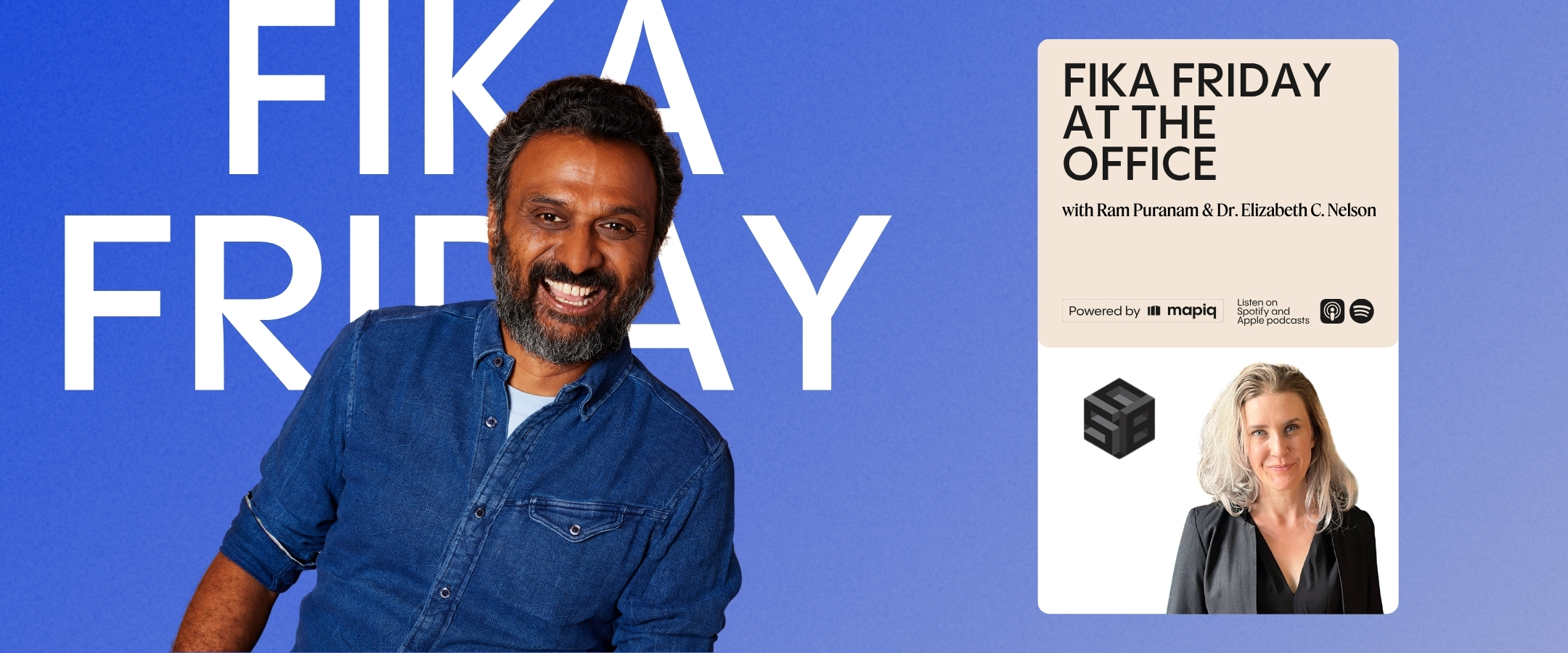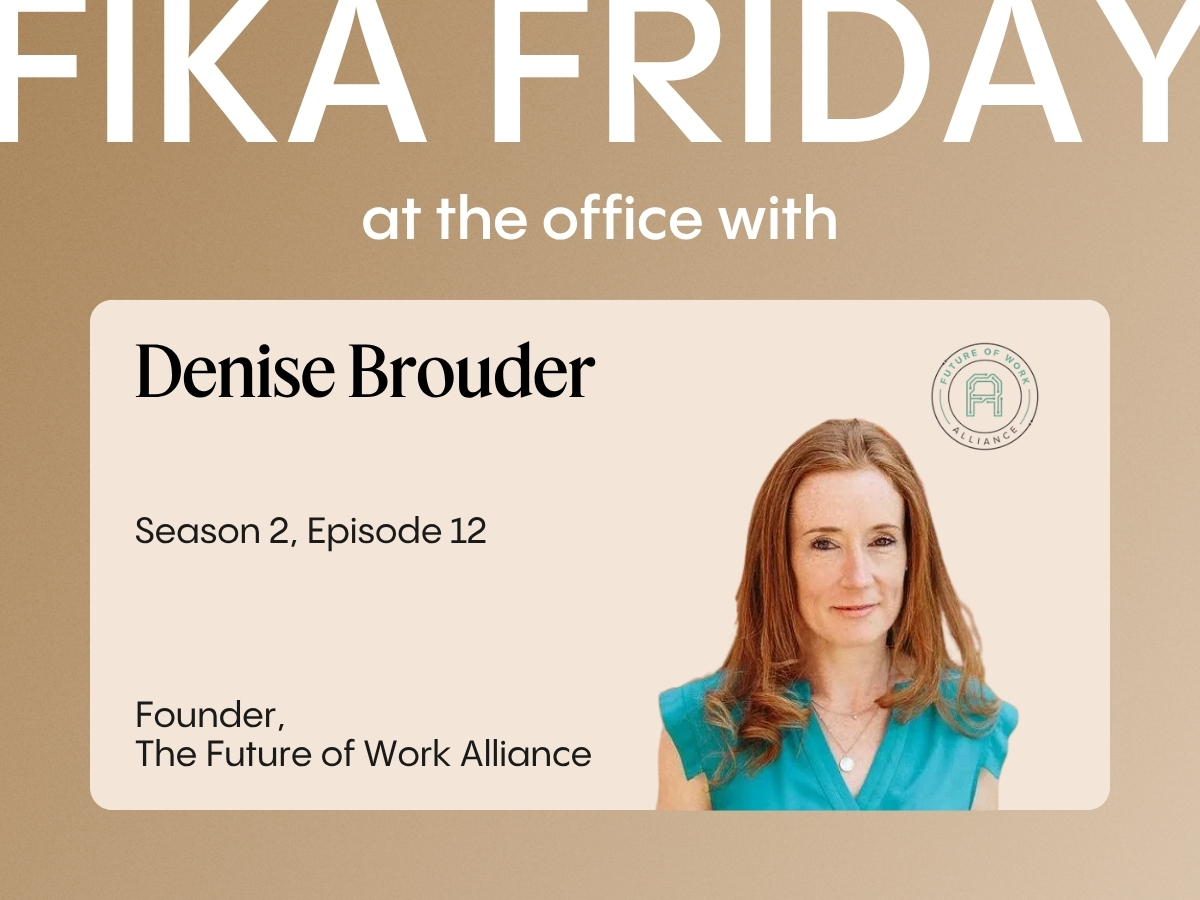
When I sat down with Dr. Elizabeth Nelson, we weren’t just talking about offices, we dug deeper into the human body. A researcher, biomedical engineer, and author of The Healthy Office Revolution, Elizabeth brings a lens that most workplace experts never touch: how our biology responds to spaces, rituals, and the people around us.
As someone with Swedish roots, she immediately connected with the idea of fika. But what struck me most was her explanation that rituals like fika aren’t just social, but also biological. They impact our pain threshold, our stress levels, even our brain chemistry. That idea became the foundation for one of the most thought-provoking conversations I’ve had this season.
How Our Bodies Experience the Office
Elizabeth shared a study that stuck with me: women undergoing a medical procedure reported significantly less pain when accompanied by a loved one. The more connected they felt, the less discomfort they experienced.
This same principle applies to our offices. When we feel psychologically safe, when we can focus without distraction, when we’re around people we trust, our body responds positively. And when we aren’t? Stress, disengagement, and even burnout can follow.
“We’re affected by other people’s chemistry. Spaces are never neutral.”
Focus Is a Need
Elizabeth is an advocate for designing offices that enable flow, a state of deep focus that requires time, quiet, and structure. She points out that it takes just three interruptions per hour to prevent someone from reaching flow. That’s something most collaborative spaces today don’t consider.
We often design for connection, but forget restoration. Open layouts dominate, but quiet zones are rare. “We’ve over-indexed on collaboration,” she said. “We need more places to think.”
Designing for Everyone
One of Elizabeth’s most powerful points was that inclusive design is about designing for the majority that’s been overlooked. That includes neurodiverse individuals, introverts, women, and underrepresented groups who don’t thrive in environments built around traditional alpha-male norms.
She also makes a bold prediction: “Soon we won’t be asking if someone is neurodiverse, but how they are.” And workplaces that embrace this complexity will be more creative, healthy, and sustainable.
Why the Future Must Be Co-Designed
Too often, the future of work is being decided by people who won’t even be in the office a few years from now. That’s a real risk, Elizabeth warned. Gen Z and Gen Alpha are walking into spaces built for Baby Boomers. The design language, and the power dynamic, needs to shift.
“If you want to keep women and underrepresented talent, design for their autonomy, their energy, and their flow, you’ll end up designing something better for everyone.”
Final Thoughts
This episode changed the way I think about space. Not as something static, but as something dynamic, capable of healing, exhausting, or inspiring us. Elizabeth reminded me that we’re not just designing workplaces, but human experiences.
And if we want people to thrive, we need to understand their biology. Catch Fika Friday at the Office wherever you get your podcasts.




